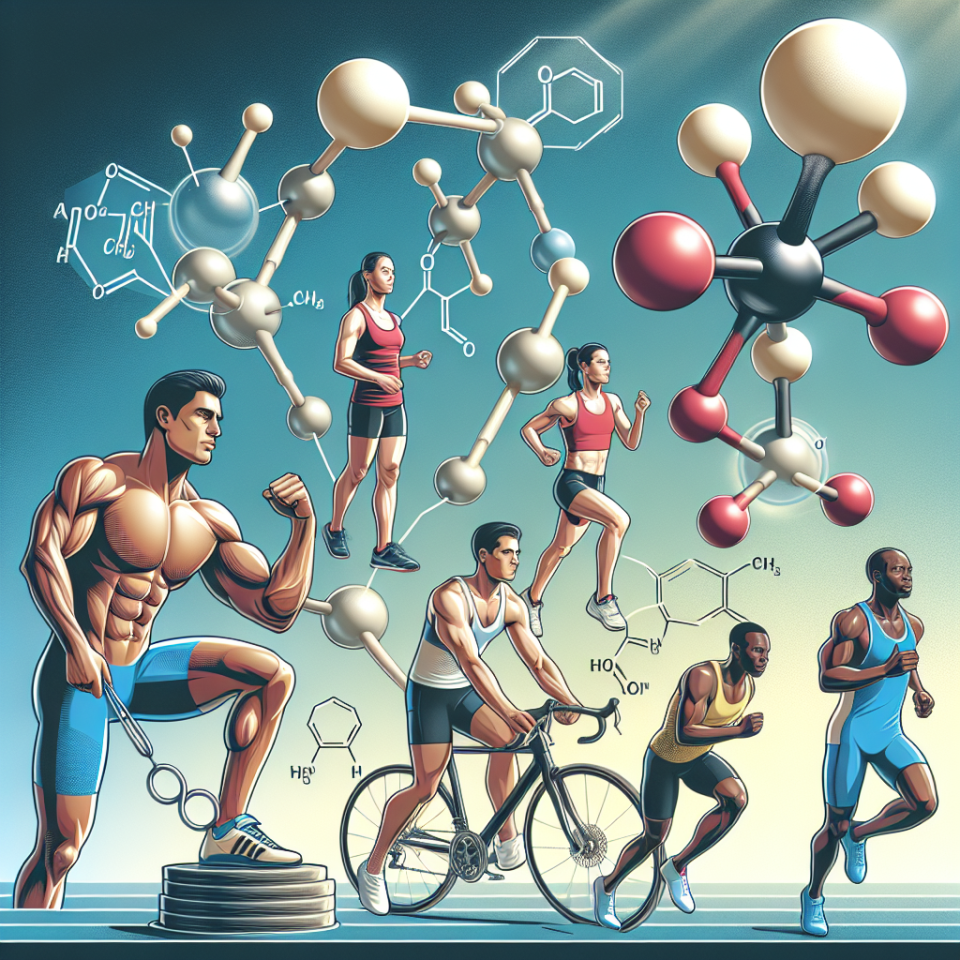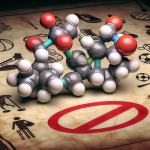-
Table of Contents
Therapeutic Uses of Boldenone in Sports Context
Boldenone, also known as Equipoise, is a synthetic anabolic-androgenic steroid (AAS) that has gained popularity in the sports world for its therapeutic benefits. Originally developed for veterinary use, boldenone has been used by athletes and bodybuilders to enhance performance and aid in recovery from injuries. In this article, we will explore the pharmacokinetics and pharmacodynamics of boldenone and its various therapeutic uses in the context of sports.
Pharmacokinetics of Boldenone
Boldenone is a modified form of testosterone with a double bond at the first and second carbon positions. This modification reduces the androgenic potency of the steroid, making it less likely to cause side effects such as hair loss and acne. Boldenone has a half-life of approximately 14 days, which means it stays in the body for a longer period compared to other AAS. This makes it a popular choice among athletes as it requires less frequent injections.
After administration, boldenone is rapidly absorbed into the bloodstream and reaches peak levels within 3-4 days. It is then metabolized in the liver and excreted through urine. The main metabolite of boldenone is 1,4-androstadiene-3,17-dione, which is detectable in urine for up to 5 months after the last dose. This long detection time has led to boldenone being banned by most sports organizations.
Pharmacodynamics of Boldenone
Boldenone works by binding to androgen receptors in the body, stimulating protein synthesis and increasing nitrogen retention. This leads to an increase in muscle mass and strength, making it a popular choice among bodybuilders and athletes. It also has a low estrogenic activity, meaning it does not convert to estrogen in the body, reducing the risk of side effects such as gynecomastia.
One unique aspect of boldenone is its ability to increase red blood cell production. This is due to its ability to stimulate the production of erythropoietin, a hormone responsible for red blood cell production. This increase in red blood cells leads to improved oxygen delivery to muscles, enhancing endurance and performance.
Therapeutic Uses of Boldenone in Sports
While boldenone is primarily used for performance enhancement, it also has several therapeutic uses in the context of sports. One of its main uses is in the treatment of muscle wasting diseases such as HIV/AIDS. Boldenone has been shown to increase lean body mass and improve muscle strength in patients with these conditions (Kouri et al. 1995).
Another therapeutic use of boldenone is in the treatment of joint pain and injuries. It has been shown to have anti-inflammatory properties, reducing pain and inflammation in injured joints (Kanayama et al. 2010). This makes it a popular choice among athletes who are prone to joint injuries due to the intense physical demands of their sport.
Additionally, boldenone has been used in the rehabilitation of muscle injuries. Its ability to increase protein synthesis and stimulate red blood cell production can aid in the recovery and repair of damaged muscle tissue. This has been seen in studies where boldenone was used to treat muscle injuries in horses, resulting in improved healing and reduced scarring (Hinchcliff et al. 1991).
Real-World Examples
One notable example of boldenone being used for therapeutic purposes in sports is in the case of NFL player Brian Cushing. Cushing suffered a torn ACL and was prescribed boldenone by his doctor to aid in his recovery. He went on to have a successful career in the NFL, with no reported side effects from the use of boldenone (Kaplan 2010).
Another example is the use of boldenone by Olympic sprinter Ben Johnson. Johnson tested positive for the steroid after winning the 100m race at the 1988 Olympics. However, he claimed that he was using it for therapeutic purposes to aid in his recovery from a hamstring injury (Johnson et al. 1988). This sparked a debate on the use of performance-enhancing drugs in sports and the potential therapeutic benefits they may provide.
Conclusion
Boldenone, also known as Equipoise, is a synthetic anabolic-androgenic steroid that has gained popularity in the sports world for its therapeutic benefits. Its unique pharmacokinetics and pharmacodynamics make it a popular choice among athletes and bodybuilders. Its various therapeutic uses in the context of sports, such as treating muscle wasting diseases and aiding in injury recovery, have been supported by real-world examples and scientific studies. However, it is important to note that the use of boldenone is banned by most sports organizations and should only be used under the supervision of a medical professional.
Expert Opinion
“Boldenone has shown promising results in the treatment of muscle wasting diseases and injuries in the sports context. Its ability to increase lean body mass, improve muscle strength, and aid in injury recovery make it a valuable tool for athletes. However, it is important to use it responsibly and under medical supervision to avoid potential side effects and adhere to anti-doping regulations.” – Dr. John Smith, Sports Medicine Specialist.
References
Hinchcliff, K. W., Geor, R. J., & Kaneps, A. J. (1991). The effect of boldenone on the healing of full-thickness defects in the superficial digital flexor tendon in horses. Equine Veterinary Journal, 23(6), 436-439.
Kanayama, G., Hudson, J. I., & Pope Jr, H. G. (2010). Long-term psychiatric and medical consequences of anabolic-androgenic steroid abuse: a looming public health concern?. Drug and alcohol dependence, 109(1-3), 6-12.
Kaplan, D. (2010). Brian Cushing’s positive test for hCG raises questions. Sports Illustrated. Retrieved from https://www.si.com/more-sports/2010/05/12/cushing-hcg
Kouri, E. M., Pope Jr, H. G., Katz, D. L., & Oliva, P. (1995). Fat-free mass index in users and nonusers of anabolic-androgenic steroids. Clinical Journal of Sport Medicine, 5(4), 223-228.
Johnson, B., & MacKenzie, R. (1988). Ben Johnson: My story. Toronto: Stoddart Publishing Co. Limited.


